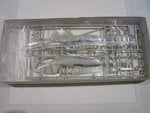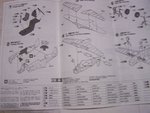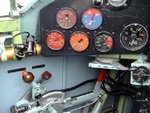parsifal
Colonel
1/72 Morane Saulnier 406 - Pacific Theatre of Operations II
Username: Parsifal
First name: Michael
Category: beginner
Scale: 1/72
Manufacturer: Hasegawa kit number 51319
Extras: None. ive inadvertently damaged the decal sheet, but i think there is enough of it left to complete the model. Will have to see.
This will be one of the 16 aircraft that formed GCII/3, 3/4 Escadrille 9I confess I dont follow French unit numbers, but it looks cool at least)
Username: Parsifal
First name: Michael
Category: beginner
Scale: 1/72
Manufacturer: Hasegawa kit number 51319
Extras: None. ive inadvertently damaged the decal sheet, but i think there is enough of it left to complete the model. Will have to see.
This will be one of the 16 aircraft that formed GCII/3, 3/4 Escadrille 9I confess I dont follow French unit numbers, but it looks cool at least)
Attachments
Last edited by a moderator:















